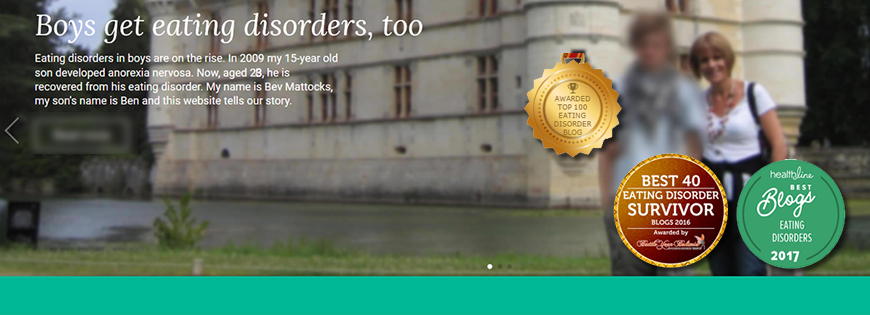 |
| Body dysmorphia drove Ben to believe he'd been fat before the eating disorder struck |
Terrified at where things were heading during his eating disorder treatment, I did a spreadsheet of his weekly weights between the first eating disorder treatment session and the last. He was exactly the same weight on discharge as he was on admission.
Actually this is not strictly true. He was 1kg heavier on discharge than he was at the start.
If you do the maths, this averages out at a weekly weight gain of 0.00925kg over 26 months. The NICE (National Institute for Clinical Excellence) guidelines say: 'In most patients with anorexia nervosa, an average weekly weight gain of 0.5–1 kg in inpatient settings and 0.5 kg in outpatient settings should be an aim of treatment. This requires about 3500 to 7000 extra calories a week.'
As I have said before, the problem was that CAMHS weren't too concerned about Ben's weight whereas I was. They hadn't seen him before he fell sick whereas I had - I knew my son better than anyone else. And CAMHS may have believed him when he claimed to have been "fat" beforehand. So this might explain why the weight issue was put on a back burner.
The problem is that, while growing up, Ben's weight and height were never officially measured before the eating disorder struck. There was no need; he was healthy and fit - and he looked fabulous. As a result I had nothing to show the CAMHS team except a few photographs. There were no concrete figures.
But there was one exception, a year before Ben fell sick when, in PSHE lessons at school, they worked out the students' BMIs. This is how I know that Ben had lost around one quarter of his body weight when he started at CAMHS. But it wasn't anything that was 'down on paper'; I just remember him telling me about it very clearly. (And sometimes I wonder whether this was the trigger for his eating disorder. As a rugby player and regular sportsman, his BMI would have been quite high when compared with his peers, potentially conveying the message that he was 'fat'...)
Although there are many common elements between both sexes, there are some elements and presentations that are unique to young men and boys with eating disorders. I would like every eating disorder professional and GP out there to spend some time on the Men Get Eating Disorders Too website which describes the common symptoms in males with eating disorders. This is the page which talks about anorexia in boys and men.

No comments:
Post a Comment